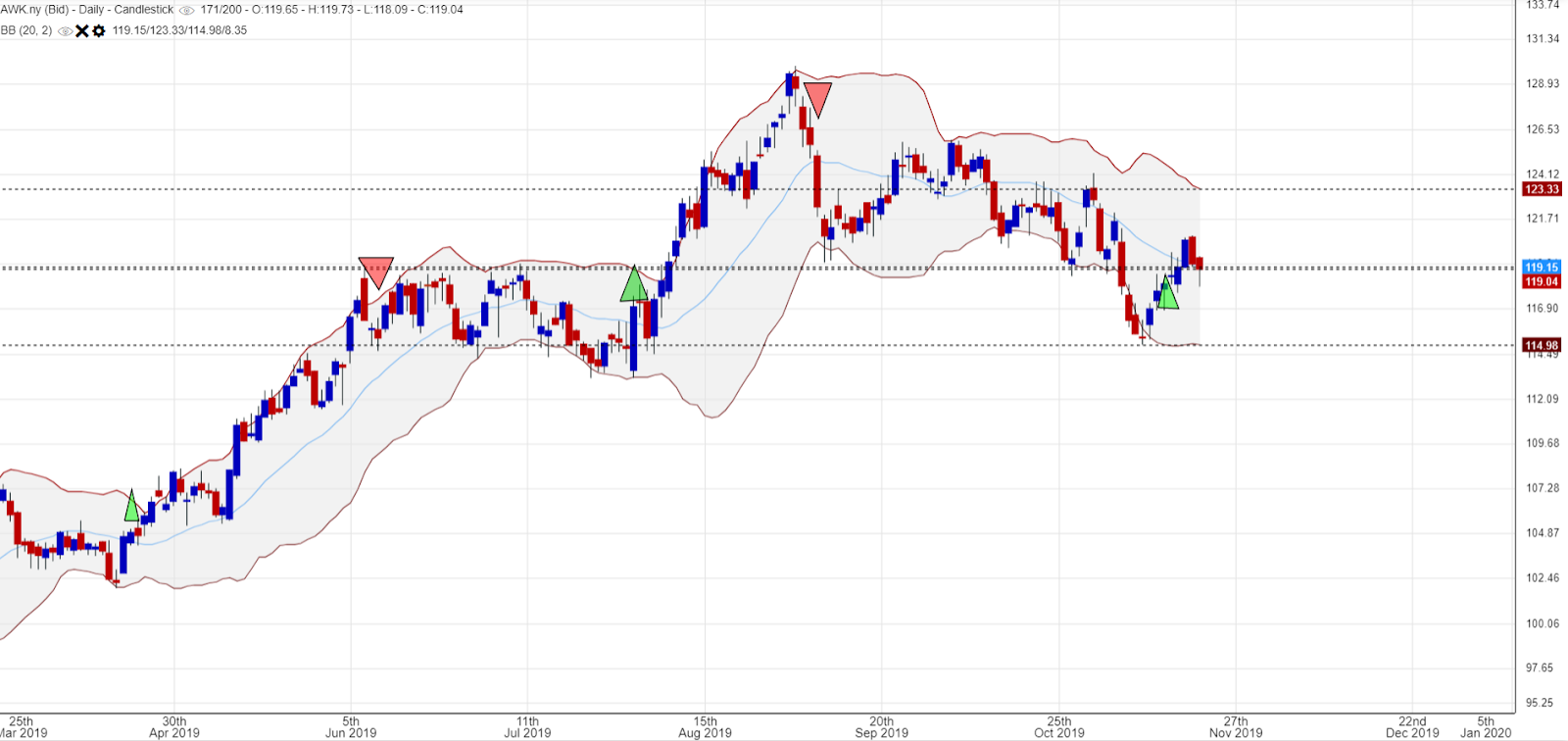1.- Identify which currency to trade based on trend
Use triple exponential moving averages and plot: open, high and low curves into a 240 minutes (4 hours) chart. Use no less than 30 periods and no more than 50 to identify strong trends:
This is however a first approach to identify the safest currency pair to trade. To increase our certainty, other studies must be used in addition. In figure 1 notice there is a moving average working as an “envelope” on the price action (purple line). We will use this line as a major indicator for defining entry/exit points as well as a forecaster of trend reversals.
2.- Analyze the identified pair(s) in detail
2.1 DPO
Use a 45 period Detrended Price Oscillator (DPO) to remove the trend from the price action and identify a longer cycle length. In figure 2 we expand our confidence in the two currency pairs showed above. If the DPO has crossed and it’s above the cero line, we have a confirmation on the uptrend, if on the contrary it has crossed under the cero line, we confirm a downtrend.
 |
2nd Condition: Second confirmation of downtrend based on DPO moving above or below the 0 line |
Note that we have not mentioned the word “signals” just yet. There is a reason for this and it is because we need one last confirmation to absolutely minimize our risk.
2.2 Optimal tracking filter (OTF)
The optimal tracking filter is an adaptive moving average. It will ultimately confirm that we need to enter in a particular direction. Display the OTF as an overlay in the chart and observe that it has crossed the three moving averages drawn earlier. Now, we are finally ready to enter a trade, but when to enter?
To answer that question we will use one more indicator together with the helpful optimal tracking filter.
3.- When to enter a trade following this system?
Knowing what we know so far about this currency pair, we want to enter a trade going short on an up-swing. It is natural then, to understand the support/resistance conditions of the trend that is developing.
First of all, plot a RSI curve using 14 periods. Take a look at figure 3.1 and make up your mind on what you see. (tip: focus on the downtrend area)
 |
3rd Condition: Entre a trade. Try to look something interesting in the RSI graph . |
 |
4rd Condition: Entry and exit signals using this system. An easy visualization of when to take a position and when to exit. |
Take a look again-
It is important to notice that in a strong downtrend, the price will move below the optimal tracking filter (acting as a resistance line), while in a strong uptrend the OTF will act as a support line.
4.- When to exit a trade? Or better yet, when not to enter at all?
If one or more of the conditions explained previously are not met, we should not enter a trade. Opening a position against these indicators will be merely speculative and bring the risk level up.
In order to exit a trade, basically look for moments when two conditions are in place. The three exponential moving averages are not trending (i.e. on a 3 o’clock direction) and the optimal tracking filter line has crossed the three exponential moving average lines in the opposite direction of your trade. That will be also confirmed by the detrended price oscillator. Looking at the figure below, we can identify moments when to enter trades and moments when not, or exit trades.




